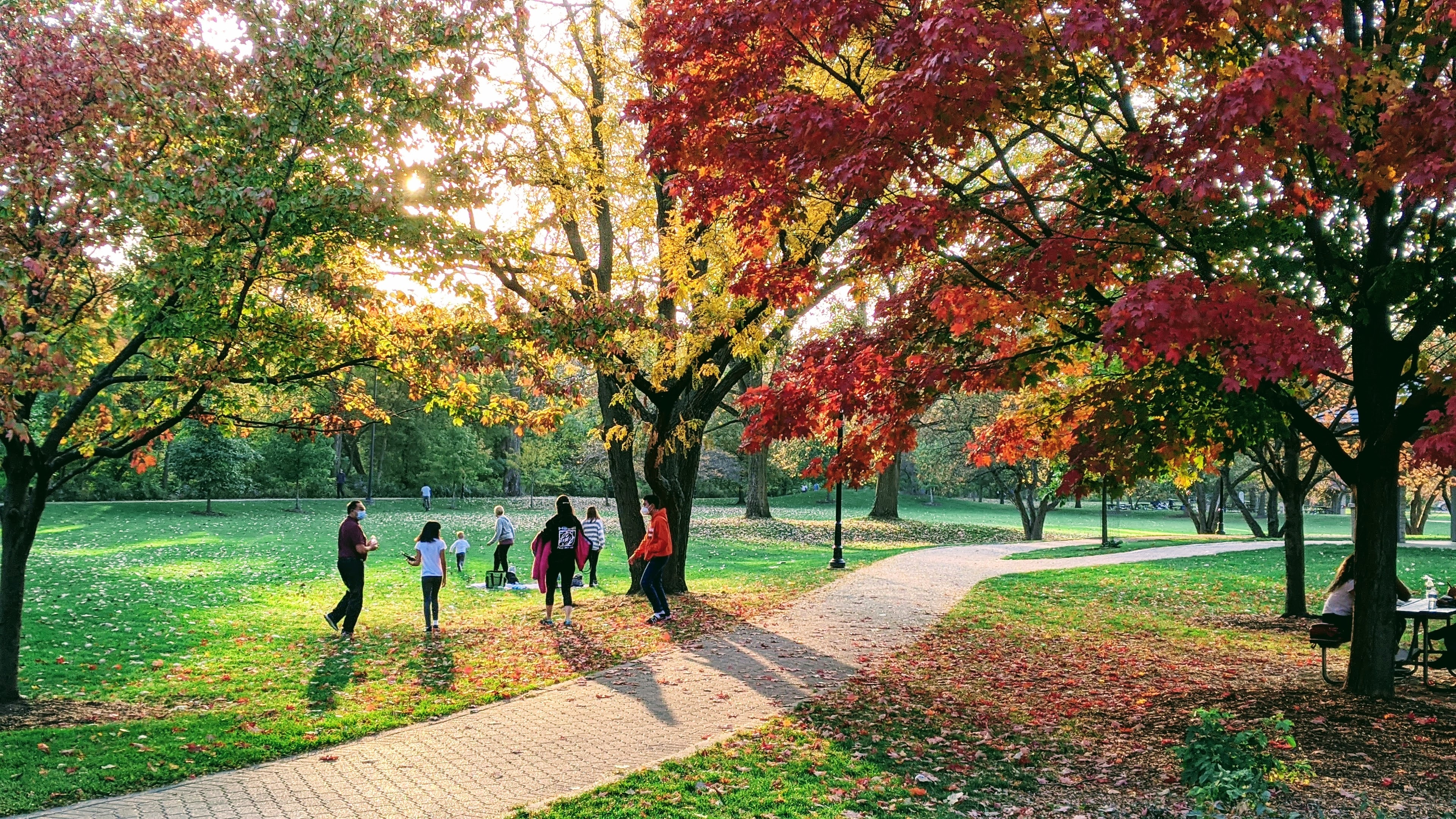
CLEARING HOUSE researchers present findings on governance of urban forest nature-based solutions (UF-NBS) and the impact of COVID-19.
Researchers from EFI and VUB organised a conference session at the third International Forest Policy Meeting (IFPM3) to share their findings on research being undertaken within the CLEARING HOUSE project on the governance of urban forest nature-based solutions and the impact of COVID-19 on urban forests.
In his introduction session, moderator Clive Davies spoke about how important urban forestry had become in respect of all aspects of forestry. EUROSTAT had determined that urbanisation in Europe had doubled between 1975 and 2015 to 72% and by 2050 it was predicted to be 84%; hence whilst not diminishing the role of forestry as a rural land use it will be in the cities and metropolises of Europe where the health and well-being of all forestry lies this coming century. In this context the nature-based benefits of all forestry need to be well articulated.
Presenting on governance, institutional and economic frameworks for UF-NBS, Dennis Roitsch (EFI) outlined the work of CLEARING HOUSE partners and local key informants to gather 22 case histories from Europe and China. The findings reveal how important the role of local government is for the delivery of UF-NBS although very different approaches become apparent as exemplified by significant community engagement in the case of Ostend, Belgium. Gathering funding for UF-NBS in Europe is risky and a time-consuming process and this has revealed the need for more funding security for longer term effects and outcomes. In contrast in China the process from planning through to delivery is much shorter but top down, however the scale of achievements in China is enormous as exemplified by the Beijing plain area afforestation programme which planted more than 70,000 ha of urban and peri-urban forest between 2011 and 2015. There is an apparent lack of private sector involvement in UF-NBS although there is some indication that utility companies such as those involved with water supply are interested.
Nic da Schio from Vrije Universiteit Brussel in a presentation titled ‘The Virus and the Trees’ outlined his research on the impact of the COVID-19 pandemic on the use of an attitude towards urban forests and green spaces in Belgium. Amongst the conclusions was that the lockdown in 2020 had led to increased use of urban green spaces and a greater concern for them but that interesting differences in terms of socio demographic segments (gender and educational attainment for instance) had emerged. A positive funding is that the priority given by respondents towards urban green spaces had risen very significantly albeit that the COVID-19 crisis had reinforced respondents’ beliefs rather than change them. Nic da Schio also wrote an article on urban forests and green space during pandemic.

Kottenforst, Bonn, Germany – Picture Jakob Derks.
Jakob Derks (EFI) outlined how the COVID-19 lockdown had impacted on attitudes towards urban forests and their management by using as a case study the 5,000-hectare Kottenforst near Bonn, Germany. This quantitative study involved interviews both pre-lockdown and during the first lockdown in 2020 at 15 different locations along with remote monitoring of visitor counts totalling 235,000. Highlighting the importance for using the urban forest the average weekly visitor counts during the COVID-19 pandemic had increased significantly; in the first lockdown by 210% and in the second lockdown by 50%. The visiting pattern had also changed with a notable peak in afternoons and that Saturday a previously quiet day had become popular. Also notable was that commuting through the forest was less important due to restrictions on places of work. We wrote an article about Bonn’s Urban forest and its positive impact. Identified changes to urban forest use appear to be mainly for pragmatic reasons including significant motivational factors with an increase in social activities and a focus on health and exercise. The buffering affect that urban forests provide during crises to urban areas is strong and this leads to a question about whether urban forests should in future be identified as critical infrastructure.
Author: Clive Davies – Senior researcher, advisor and facilitator at EFI, Bonn.
EFI provides forest-related knowledge around three interconnected and interdisciplinary themes: bioeconomy, resilience and governance and is a CLEARING HOUSE partner.
